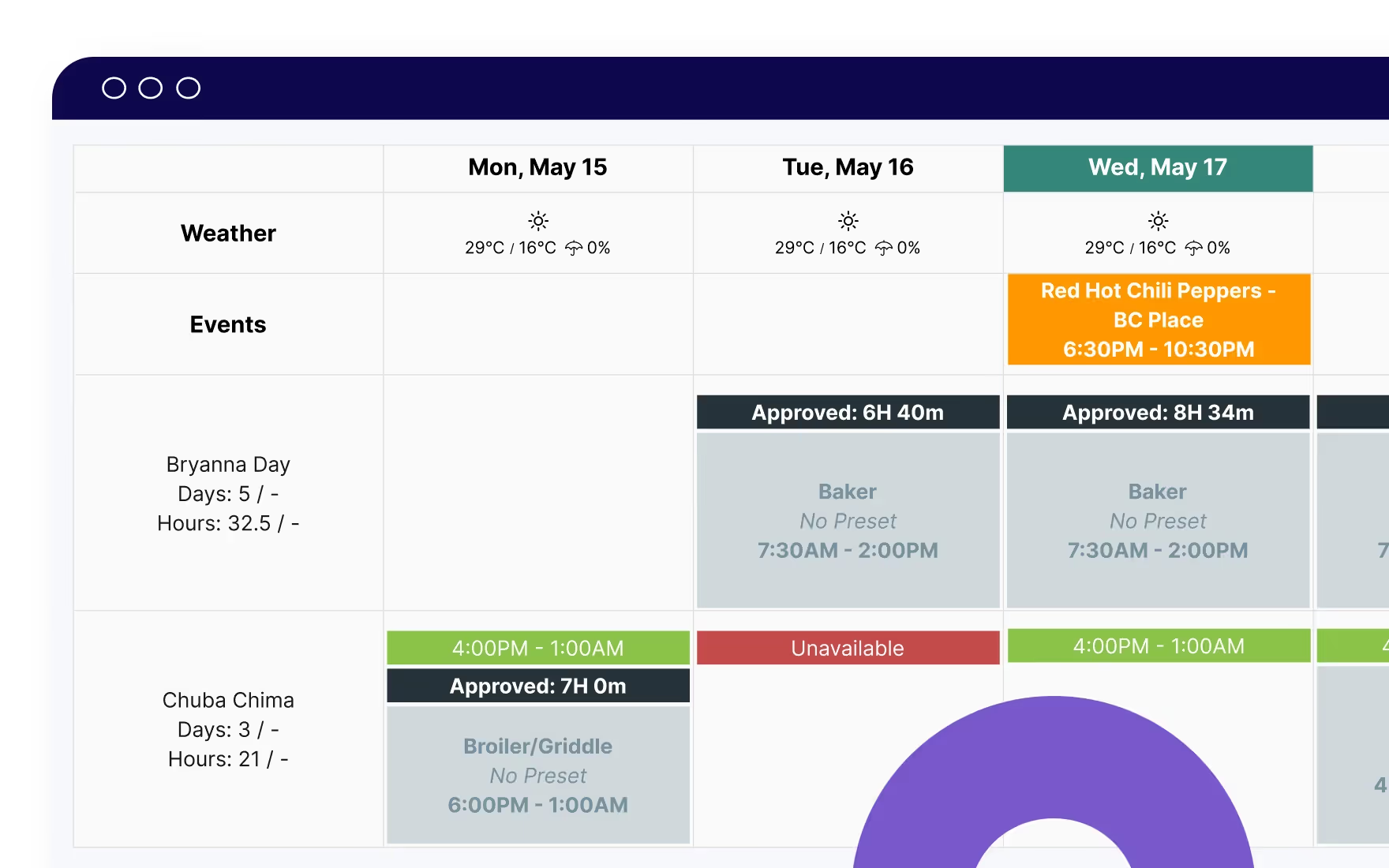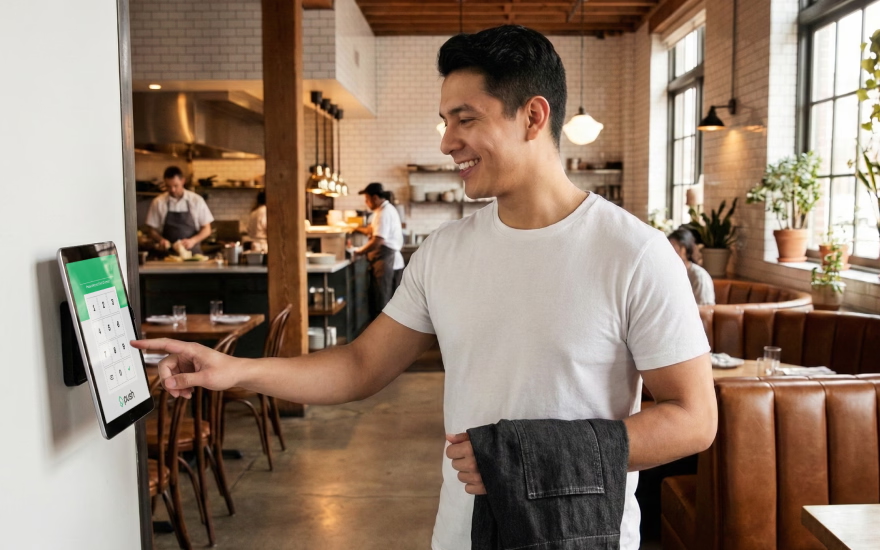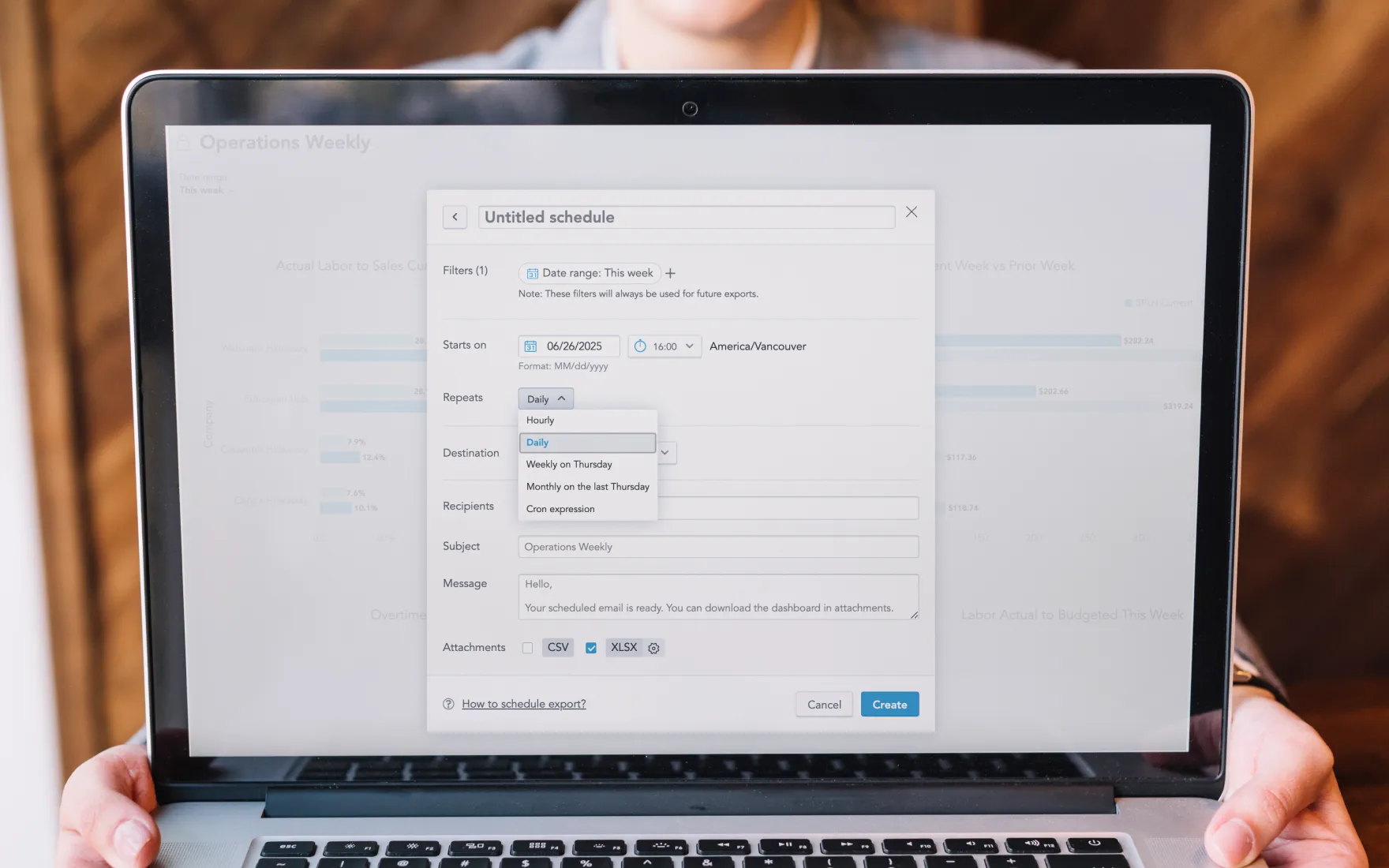The Future of Dining: 8 Ways to Integrate Restaurant Tech

Across the globe, people spend 44% of their waking hours looking at screens, an increase of more than 50 minutes per day since 2013. The use of technology is growing across every sector of the economy, and the restaurant industry is no exception.
Software programs for managing employees’ schedules, automating payroll, and organizing paperwork have only gotten more intelligent and more competitively priced.
Integrating restaurant technology into your business can help you succeed in today’s tech-oriented economy. Paying close attention to trends and new developments can put you far ahead of the competition. In this article, we’ll show you 8 ways you can integrate restaurant tech in 2024.
What is Restaurant Technology?
Restaurant technology refers to any system that’s designed to improve efficiency, customer experience, and operations. These might include back-of-house automation, kitchen equipment, and digital tools.
Why Incorporate Restaurant Technologies?
Why should your business incorporate restaurant technologies? By and large, the data indicates that these technologies improve efficiency, reduce reliance on labor, and minimize food waste.
According to our State of the Industry report, 58% of restaurant operators believe using tech and automation can alleviate labor shortages.
However, a staggering 81% of independent restaurants continue to use a traditional legacy POS system, according to SpotOn.
There are plenty of technologies that restaurants haven’t begun to utilize since they just don’t know much about them. Here are 8 ways your restaurant can integrate restaurant technologies in 2024.

8 Ways to Integrate Restaurant Technologies in 2024
1. Online Ordering and Delivery
DoorDash, UberEats, and Grubhub, to name a few, are changing the way that consumers interact with the restaurant industry. The compound annual growth rate for food delivery services is projected to grow 10.1% through 2028. The industry is expected to reach a market cap of $1.22 trillion by 2024 — very impressive for an industry that’s younger than fifteen years old.
Instead of having to design and manage their own websites, restaurants can use these services to easily create an online menu by integrating their POS. By leveraging an existing user base, restaurants are able to cut customer acquisition costs. Additionally, delivery services expand restaurants' reach without needing in-house drivers. The result: free marketing and a decreased reliance on labor. This allows restaurants to streamline growth, but at the cost of the apps’ service fees. It is best to compare each delivery app’s pricing model to decide which one is the right fit for your business.
2. Self-Serve Kiosks
Self-serve kiosks enhance operational efficiency and reduce labor costs by 25%, while boosting revenue by up to 20%.
These orders reduce friction and enhance efficiency in a number of ways:
- Since the customer doesn’t have to worry about the front-of-house entering their order into the system incorrectly, there are fewer processing errors.
- It gives customers the ability to see exactly what they want before they order it. If a customer is interested in a sandwich, for example, they can click on the “Sandwich” category and see a mouth-watering display of potential options. The kiosk also easily shows that extra cheese will add another 35 cents to the total, preventing confusion or frustration when the customer receives their bill.
- Kiosks free up cashiers’ time, so that they can help prepare orders, clean, and restock condiments. This can be a savior for restaurants that are short on staff.

3. AI-Powered Systems
AI is currently the top buzzword in the tech industry, and for good reason: it’s redefining what consumers previously thought was possible.
AI-powered reservation management systems – true to their name – manage reservations for you, automatically updating availability when tables are booked.
Additionally, AI can now analyze your existing customer behavior data to make personalized recommendations. You no longer have to spend hours analyzing customer behavior to find out that your customers are 30% more likely to have dessert when they pair the Pinot Noir with the filet mignon — AI can make those insights for you.
4. Robots
While self-serve kiosks haven’t yet made their way into the traditional sit-down restaurant scene, robots have made some headway.
For example, a restaurant owner in Colorado, fed up with the difficulty of hiring new workers, purchased two robots to do the serving. The result: increased business and decreased costs. These stories are becoming more and more popular as the technology develops.
Two companies, Servi and Matradee, currently dominate the food delivery robot industry. Leasing a robot from Servi for one year costs $11,700, while Matradee can be purchased for $21,600, but also requires a regular SaaS fee. Either way, these costs are substantially lower than the $28,130 median pay for food service workers.

5. Smart Payment Solutions
Mobile point-of-sale (mPOS) systems allow customers to pay at the table, which eliminates the need for the server to take their card, process the payment, and return the card. This offers an array of advantages over traditional payment systems, since it's faster, more convenient, and more secure.
76% of restaurants now offer contactless payment solutions, and the industry is expected to grow to $10 trillion by 2027, an almost 400% increase from 2022.
6. Kitchen Display Systems
Kitchen display systems update the kitchen with orders from the front-of-house (and online ordering platforms) to speed up delivery, reduce errors, and reduce friction between the waitstaff and kitchen. Instead of traditional paper-order tickets, these systems eliminate errors from manual order entry by automatically transferring orders from the point-of-sale system to the kitchen display system. When paired with self-serve kiosks, they add another layer of efficiency, allowing customers to input their orders directly to the back-of-house.
7. People Management Software
With people management software, time-consuming tasks like payroll processing, vacation requests, and performance reviews can be automated, freeing up managers' time. Scheduling services are increasingly smarter, reducing errors and allowing managers to automatically update workers when there’s a need for someone to work overtime.

8. Smart Inventory Management Systems
Smart inventory management systems (SIMs) analyze sales data and predict demand to ensure you have the right amount of stock at all times. They leverage technologies like RFID tags, barcode scanners, and cloud-based software to track inventory in real-time, and they make recommendations accordingly.
Things to Consider Before Implementing Restaurant Technologies
While integrating technology might seem like a no-brainer, there are potential downsides, including:
- High initial investment costs. Many restaurant software programs and other advanced technologies have high start-up costs. While the data shows that these technologies improve efficiencies and reduce food waste on average, that might not be true for your individual restaurant.
- Staff training. With restaurant staff turnover at all-time highs and labor in such high demand, it might be a tough ask to request that your staff learn all new systems.
- Maintenance. This might include recurring subscription fees and high-cost tech repairs. If the self-serve kiosk breaks down after a toddler spills juice on it, you’ll likely have to contact a technician.
- Brand incorporation. Trends can be hard to predict. You have to consider how the technology works with your brand and whether customers will adapt to it. A robot might work well for an all-you-can-eat sushi restaurant, but it might not be the best choice for a Michelin-star steakhouse. While the technology might improve order efficiency, it could hurt sales and your brand image.
- Data protection. Uploading any information to a database always comes with risks. If the data is hacked or corrupted, the result might be more headaches, not more money.
Final Thoughts on Restaurant Technologies
The Industrial Revolution gave birth to new forms of transportation and refrigeration, paving the path for the modern restaurant. Increased inventory meant a wider variety of meals at lower price points.
Today, restaurants are undergoing a similar revolution. New technologies are boosting efficiency, decreasing costs, and cutting back on food waste.
Integrating the right technology into your restaurant could completely change the way that you do business. Push Operations is an all-in-one management system that simplifies HR, payroll, and workforce management. Currently in use by restaurants as diverse as Five Guys, Denny’s, and Crumbl Cookies, Push Operations can help you save an average of 12+ hours per week, reducing labor costs by 3% and running payroll in only 10 minutes. Book a demo to see what Push can automate for your restaurant.



